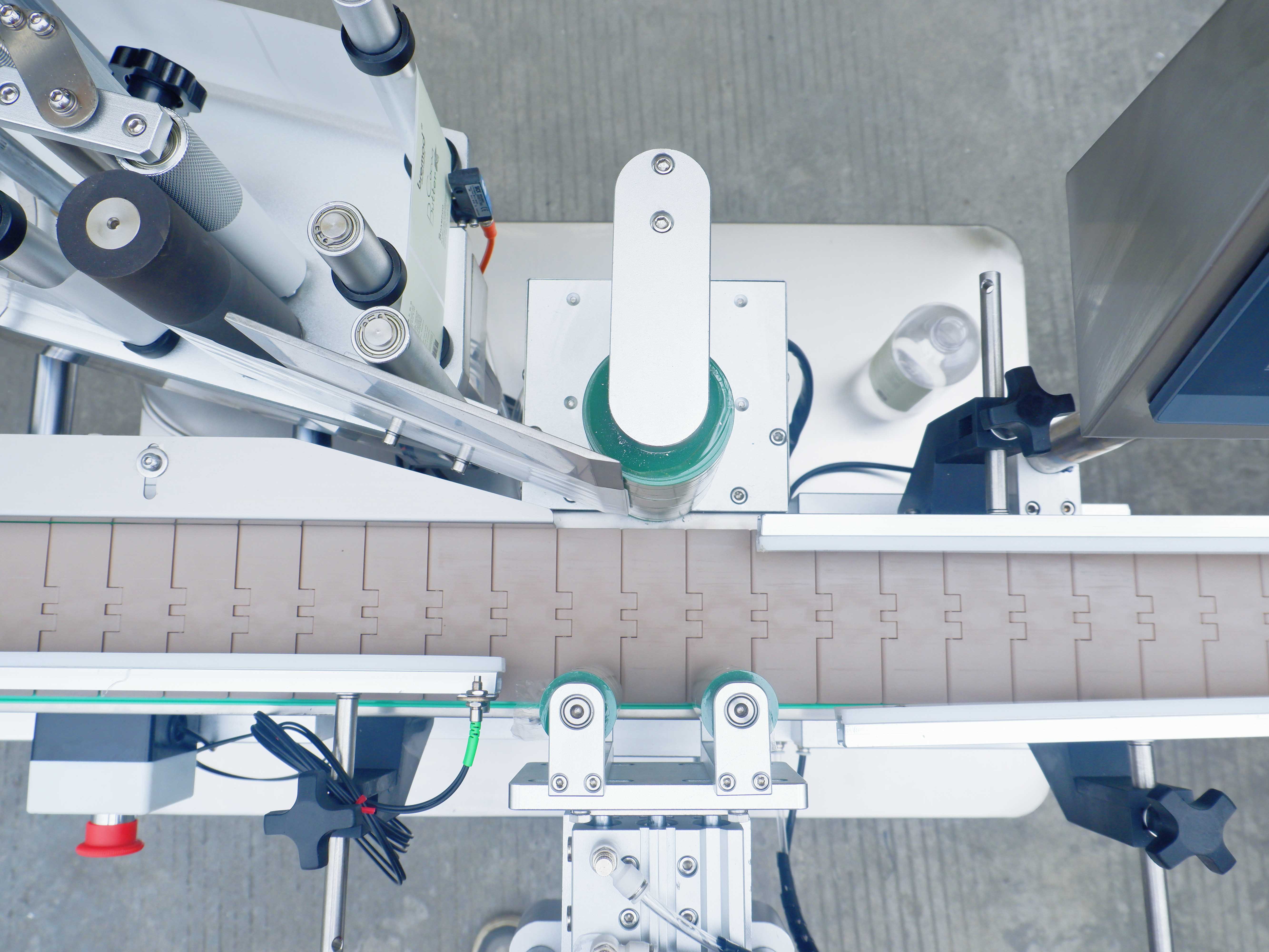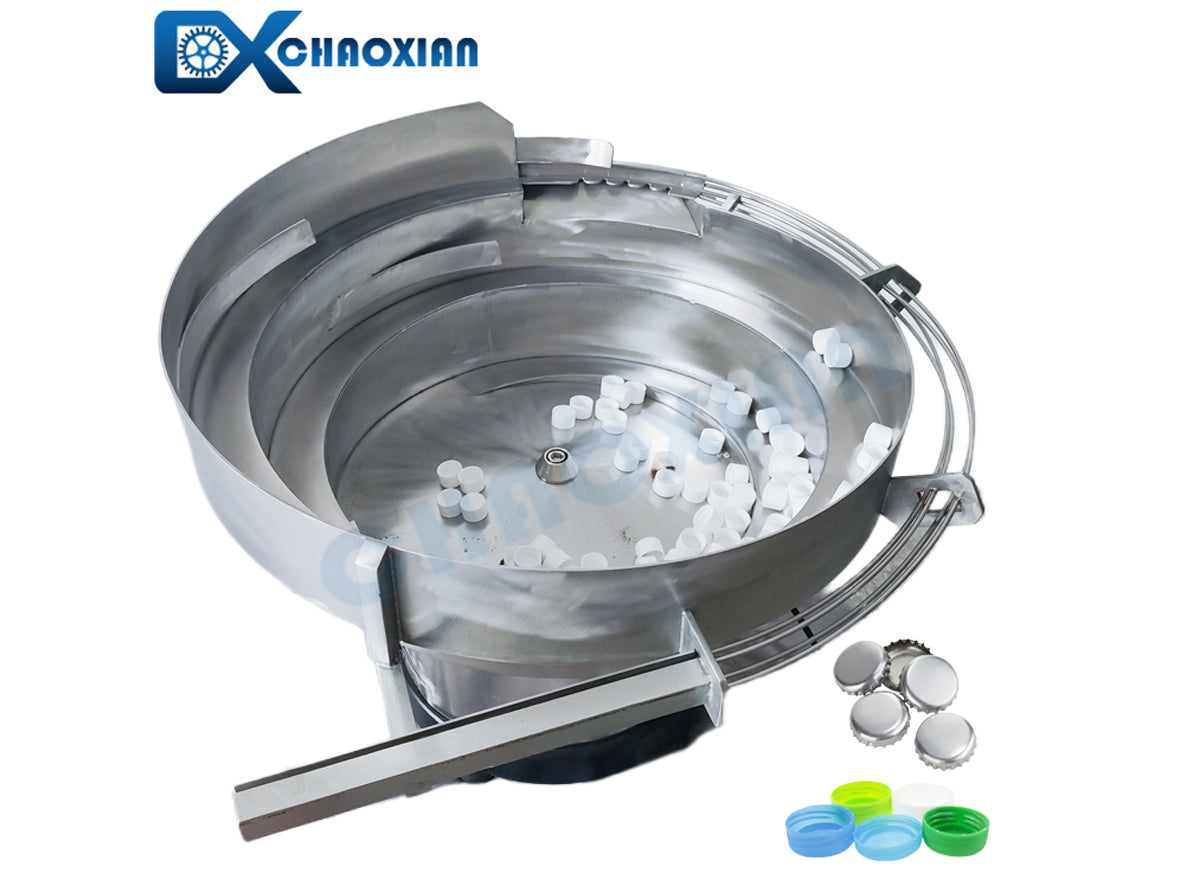Detailed Introduction to the Cap Vibratory Bowl Feeder
The vibratory bowl feeder is an essential piece of automated feeding equipment, widely used in various industries' production lines, especially in scenarios requiring sorting and orienting small parts. This article provides a detailed overview of the structure, working principles, and applications of the vibratory bowl feeder.
I. Structural Components
1. Bowl
-
Core Component: The bowl is the core part of the vibratory feeder, usually circular or square in shape. The interior features specific tracks, such as spiral tracks, customized to meet the requirements of the parts being conveyed.
-
Material: Typically made of durable materials like stainless steel, the bowl offers excellent wear resistance and corrosion resistance for long-term use.
-
Track Requirements: The surface of the tracks must be smooth and precise to ensure seamless part movement.
2. Base
-
Vibration Source: The base is located beneath the bowl and houses vibration sources, such as electromagnets or piezoelectric ceramics. These sources generate vibrations of varying frequencies and amplitudes through the controller, driving the bowl's operation.
-
Design Requirements: The base must be designed with balanced weight distribution and stability to prevent shaking or displacement during operation.
3. Controller
-
Functionality: The controller adjusts the vibration frequency, amplitude, and mode of the vibration source to meet the feeding requirements of various parts.
-
Intelligent Features: Controllers often include features such as scheduled start/stop, fault alarms, and more, facilitating easy monitoring and management of the vibratory feeder's performance.
4. Linear Feeder (Optional)
-
Extended Functionality: In some scenarios, a linear feeder is connected to the bowl's outlet to transport parts further to specific stations.
-
Connection: The linear feeder links directly to the vibratory bowl's discharge port and completes linear feeding through vibration or other mechanisms.
II. Working Principles
1. Vibration Generation
When the controller is powered on, it sends electrical signals to the vibration source inside the base. For instance, electromagnetic vibration sources alternate between being energized and de-energized, creating magnetic forces that drive the bowl's up-and-down vibrations. Piezoelectric vibration sources convert electrical energy into mechanical energy through the piezoelectric effect.
2. Part Movement
The bowl's vibrations exert a combined upward and forward force on the parts, guiding them along the track. The track design ensures parts are oriented correctly as they move upward. For example, tracks may adjust in width and height to orient cylindrical parts into a specific direction before discharging them.
III. Applications and Advantages
1. Electronics Industry
-
Application Details: Vibratory feeders are used to sort electronic components like resistors and capacitors.
-
Advantages: Enhance production efficiency, reduce manual handling, and mitigate the risk of static damage.
2. Hardware Industry
-
Application Details: Used for sorting and feeding screws, nuts, and other hardware parts.
-
Advantages: Customizable designs for various specifications improve assembly efficiency and stability.
3. Pharmaceutical Industry
-
Application Details: Used to feed tablets and capsules during pharmaceutical production.
-
Advantages: Reduce contamination risks, ensure precision, and meet strict hygiene standards.
IV. Why Choose CX PACKING MACHINE
As a professional manufacturer of packaging machinery, CX PACKING MACHINE possesses extensive experience and technical expertise, delivering efficient and reliable vibratory bowl solutions to clients.
-
Technical Advantages: Our vibratory feeders are designed with high precision, ensuring stable and consistent feeding.
-
Customization: We provide tailored designs for bowl tracks and overall structure to seamlessly integrate with various production lines.
-
Comprehensive Support: From design and production to after-sales service, we offer end-to-end solutions to ensure worry-free usage.
-
Industry Expertise: Serving electronics, hardware, pharmaceutical, and many other sectors, we provide top-quality equipment to global clients.
Conclusion
Vibratory bowl feeders are crucial in industrial automation. Their precise design and intelligent control make them adaptable to various industries' needs. By enhancing production line automation, vibratory feeders reduce costs and increase competitiveness. Choosing CX PACKING MACHINE's vibratory feeder equipment brings added value to your production line.
For more information about vibratory bowl feeders or other packaging machinery, please visit our website or contact our professional team.



